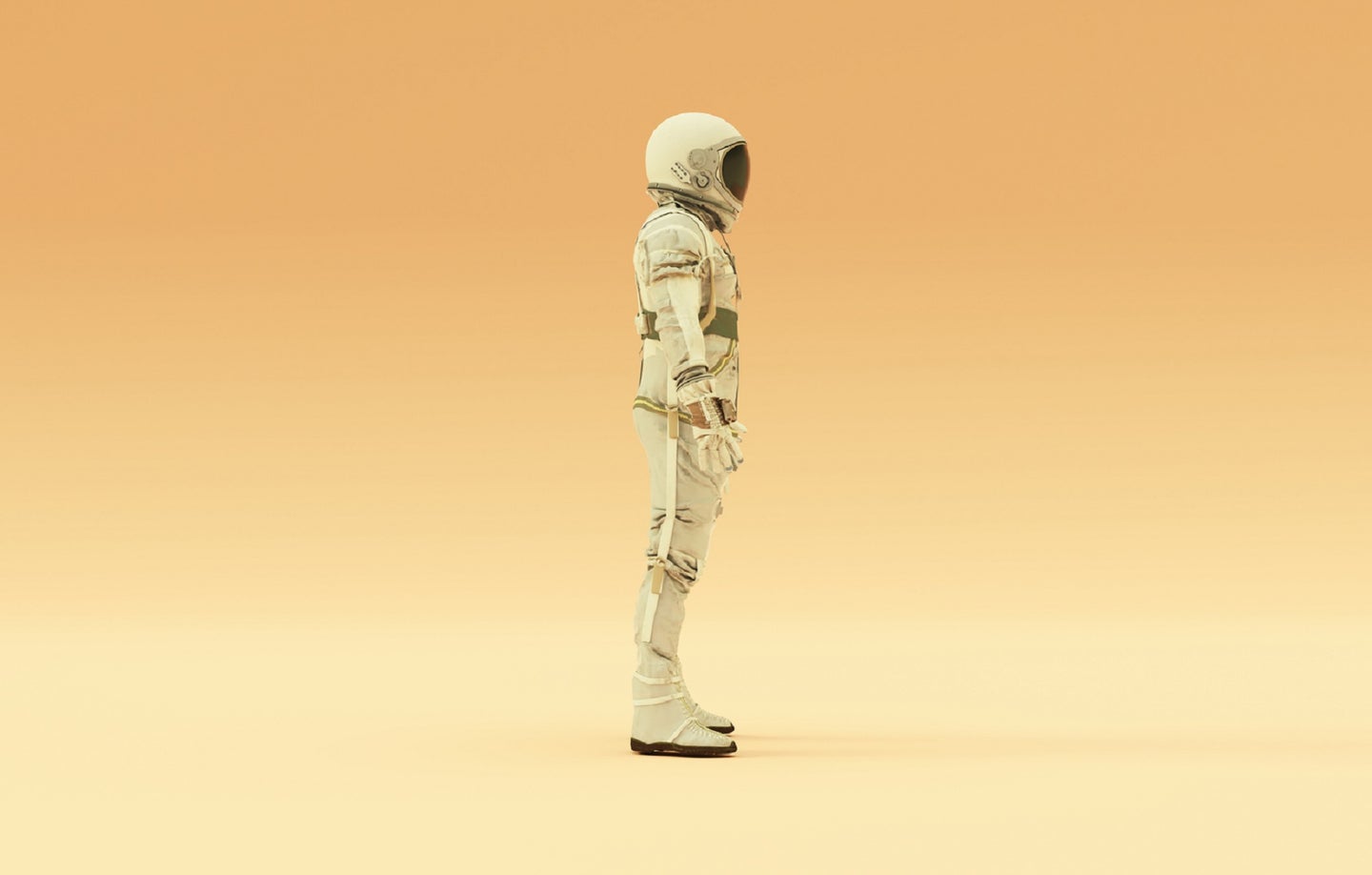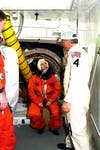Future astronauts and space tourists could rock 3D printed ‘second skin’
The next generation of spacesuits could be extremely personalized—and astronauts are here for it.

Designing a great spacesuit takes hard work. Often the lynchpin of a successful mission, a good one can make life away from Earth a breeze, but a bad one can turn an astronaut’s life upside down.
No one wants to come back from space with bruises and shoulder injuries, but that’s exactly what some astronauts have had to deal with. However, these wounds aren’t induced by anything so striking as a satellite collision or a deep space anomaly—they’re often caused by a crew member’s own uniform.
[Related: Why we’re still obsessed with the watches astronauts wore to the moon]
Over the years, NASA has tried several different strategies to perfect the next generation of spacesuits. From the Mercury spacesuit to the current iteration of the Exploration Extravehicular Mobility Unit (xEMU), the history of astronaut apparel has been a storied one, and at times, dotted with mishaps.
In light of that, as part of the NASA Institute for Advanced Concepts (NIAC) program, one former Space Shuttle mission astronaut hopes to make future spacesuits fully customizable. Bonnie Dunbar, now a professor of aerospace engineering at Texas A&M University, says that she’s been thinking about how to make astronauts’ ensembles safer and cozier for more than 20 years.

“A spacesuit really is unlike a suit you buy in the store,” Dunbar says. “This is just a human-shaped spacecraft, so it’s very complicated.” And as many commercial space travelers don their own gear, cheap and relatively quick spacesuit production will be on the rise.
Dunbar’s proposal, called the Spacesuit Digital Thread, was one of 12 concepts chosen by NASA to receive $175,000 in funding this year to prove the feasibility of their designs over the next nine months. It works by combining a popular sci-fi trope with a rather modern manufacturing concept using biometric data and digital tools.
“I can build it digitally, look at how it will perform mechanically, and then manufacture it,” Dunbar says.
Using light and two whole body motion scanners to build a 3D image, the system takes about 20 seconds for a computer to build a “digital twin” of a person. From there, Dunbar’s team can modify and tailor the spacesuit to fit an individual’s needs. Streamlining both the design and manufacturing process on Earth and during spaceflight could also allow astronauts as well as future space tourists to 3D print new suits—and repair old ones in anywhere from a few minutes to hours.
As hundreds more astronauts and future space tourists plan to head for the final frontier, the dream of manufacturing a form-fitting, wearable spacesuit in record time would be akin to a modern miracle, compared to years past.
“This is just a human-shaped spacecraft, so it’s very complicated.”
Bonnie Dunbar, a professor of aerospace engineering at Texas A&M University
During the Apollo missions, which lasted from 1961 to 1972, each member of the crew were granted three custom spacesuits. Created using special materials like beta cloth—a fabric made with woven glass and coated with fireproof Teflon—and with now obsolete construction techniques, many astronauts were said to be satisfied with them. But after the Space Shuttle Program began in 1981, more astronauts meant a larger distribution of sizes, big and small. And because there’s no such thing as a standard human, it was hard to accommodate so many different shapes and sizes.
To reduce costs, only 18 different spacesuits were built to accommodate nearly 200 NASA astronauts, which didn’t always work out for the best. Although a typical crew would average about seven people, not all of them could fit or function with a suit.
Until the program ended in 2011, some astronauts reported experiencing finger nail loss, and nearly a 50 percent loss of strength due to pressure resistance inside the suit (imagine being inside a huge balloon that resists your every movement). As only two members of the crew needed to be able to conduct spacewalks or venture outside the shuttle, little was fixed on the suits. In 2019, NASA ended up scrapping an all-female spacewalk after two astronauts—Anne McClain and Christina Koch—both requested medium-size spacesuits, only to be told that the ISS only had one that could handle the rigors of space.
Today, Dunbar believes that going back to the original idea of customizable spacesuits will minimize the physical risks of extraplanetary exploration, and improve several features of modern designs.
“In all that history of the suit, it was very clear to me that regardless of the budgetary reasons for cutting the sizes, we really didn’t have a suit to fit everyone best and had what we call good mobility,” she says. But her team’s objective is to make a suit so mobile, “you don’t know you have it on.”
There are also at least two other things a good space suit has to prioritize: high visibility and the ability to protect astronauts from extremely harsh environments. In most cases, that means it has to be able to survive the perfect vacuum of space, which is devoid of all matter (oxygen included).

While such a suit would allow astronauts to effectively explore the surface of the moon and Mars, Dunbar also envisions the concept extending to protective gear for harsh environments on Earth, especially for researchers doing undersea work or trekking through Antarctica.
But how far away in the future is such a modern marvel of engineering?
“The technology is there,” says Vincent Duffy, a professor of industrial engineering at Purdue University. “What we will do [next] is put it together in a way that kind of demonstrates the proof of concept.”
Duffy, who joined Dunbar’s team as a human digital-modeling expert, says that it takes someone with a vision to work out whether a project of this magnitude can be made functional, affordable once commercialized, and practical.
“One of the very nice things about this, there’s an application as soon as it’s functional,” he explains.
[Related: NASA’s experimental electric plane could take to the skies this year]
Advances in 3D printing and manufacturing have led to an innumerable number of technological wonders, and that still-emerging market has just as well expanded to the space industry. Some researchers even want to use 3D printing to help create furniture in space.
And although the challenges of mass producing a personalized spacesuit may be a long way off, Duffy is positive that by the end of the initial nine-month study, the project will be the first of many by NASA that applies unique manufacturing techniques to space travel. In the future, you could have a new spacesuit in your hands with the press of a button. And who knows, you might get it sooner than the Prius you’ve been waitlisted for since January.
